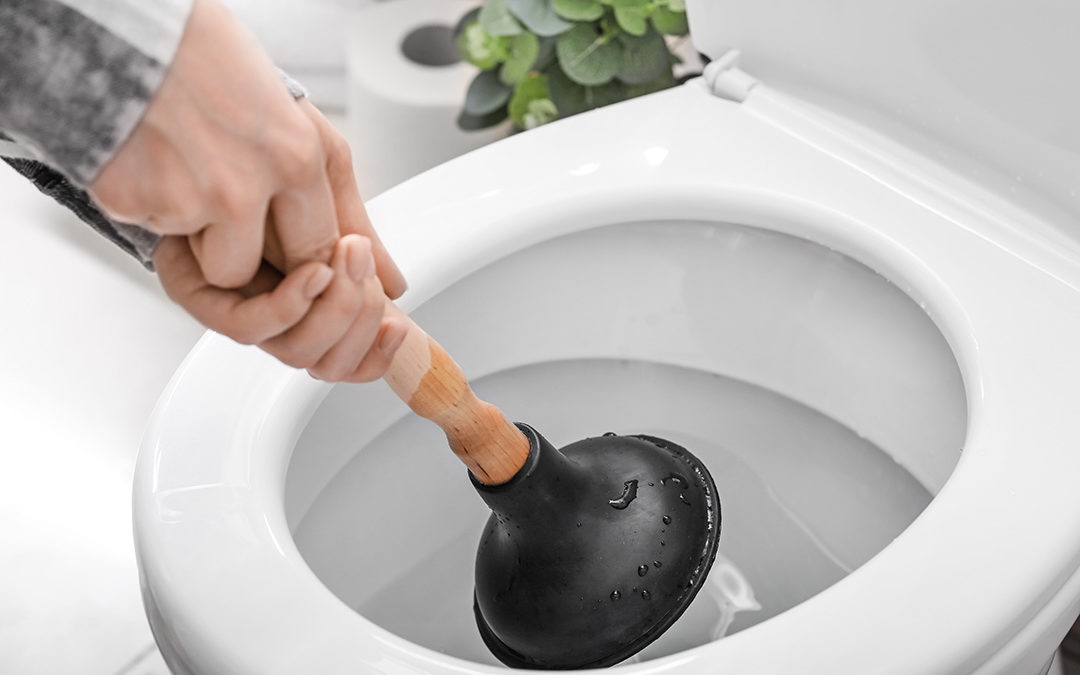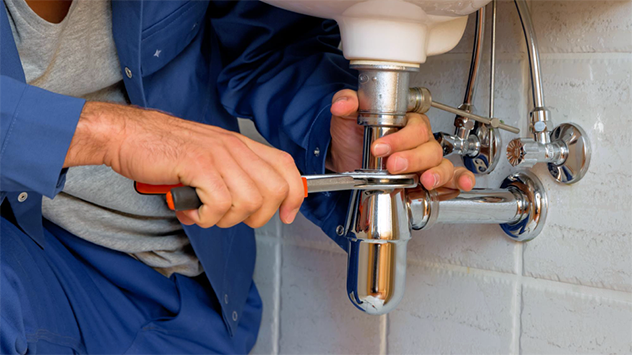Having plumbing issues can be frustrating. Dripping taps, clogged drains, and leaky pipes are common problems.
Fixing them might seem hard, but it’s doable. Plumbing problems often strike at the worst times. A sudden leak or a slow drain can disrupt your day. Knowing how to fix these issues saves time and money. This guide will help you tackle common plumbing problems.
With a few tools and some patience, you can handle most plumbing repairs yourself. Let’s dive in and get your plumbing back in top shape.
Common Plumbing Problems
Plumbing problems – we’ve all been there, right? Those annoying issues that pop up when you least expect them. Not only can they disrupt your daily routine, but they can also cause quite a bit of damage if left unchecked. In this section, we’ll explore some common plumbing problems and how you can tackle them yourself. Let’s dive in!
Leaky Faucets
Leaky faucets are one of the most common plumbing issues people face. That constant drip, drip, drip can drive you mad! But don’t worry, fixing a leaky faucet is simpler than you might think.
Here’s a step-by-step guide:
- Turn off the water supply. You don’t want water spraying everywhere!
- Remove the handle. You might need a screwdriver for this.
- Check the O-ring and washer. These are often the culprits behind the leak.
- Replace the faulty parts. You can find these at any hardware store.
- Reassemble the faucet. Make sure everything is tight and secure.
And there you have it! Your faucet should be as good as new. If it’s still leaking, it might be time to call in a professional.
Clogged Drains
Clogged drains are another common headache. They can happen in the kitchen, bathroom, or even the laundry room. And let’s be honest, dealing with a clogged drain is no one’s idea of fun.
But before you reach for the phone to call a plumber, try these simple tricks:
- Use a plunger. It’s not just for toilets! A few vigorous pumps can often dislodge the clog.
- Pour boiling water down the drain. This can help dissolve grease and soap buildup.
- Use a drain snake. This handy tool can reach down and pull out whatever is causing the blockage.
Still stuck? You might need a more heavy-duty solution. Just remember to be cautious with chemical drain cleaners, as they can damage your pipes if used too often.
Tackling these common plumbing problems doesn’t have to be a daunting task. With a little know-how and the right tools, you can handle most issues on your own. And if things get too complicated, there’s no shame in calling a professional. After all, a well-maintained plumbing system is key to a happy home!
Essential Tools For Plumbing Repairs
Fixing plumbing issues can be a daunting task, especially if you’re not familiar with the tools required. However, having the right tools can make all the difference. Let’s dive into some of the essential tools you’ll need to tackle common plumbing repairs.
Wrenches
Wrenches are a plumber’s best friend. They come in various sizes and types, each designed for a specific purpose. The two most common types are:
- Pipe Wrench: This is the classic, heavy-duty wrench that is used to tighten or loosen pipes and fittings. It has an adjustable jaw, making it versatile for different sizes of pipes.
- Adjustable Wrench: Also known as a crescent wrench, this tool is handy for smaller tasks and can be adjusted to fit a variety of bolt and nut sizes.
Using wrenches properly can save you from a lot of headaches. Remember to turn the wrench in the right direction (righty-tighty, lefty-loosey) to avoid damaging the pipe or fitting.
Plungers
Plungers are a must-have in any home. They come in handy for unclogging toilets, sinks, and drains. There are two main types:
- Cup Plunger: This is the most common type, perfect for sinks and tubs. Its flat bottom creates a seal over the drain to create suction.
- Flange Plunger: Designed specifically for toilets, it has an extra piece of rubber (the flange) that fits into the toilet drain to create a better seal.
Using a plunger is simple: place it over the drain, push down to create suction, and then pull up quickly. Repeat this a few times, and you should see the clog start to clear. It’s a bit like a workout, but for your plumbing!
Having these essential tools on hand can make plumbing repairs much easier. They might not turn you into a professional plumber overnight, but they’ll certainly help you manage small issues without needing to call in the experts. So, are you ready to tackle that leaky faucet or clogged drain?
Fixing Leaky Faucets
Leaky faucets can be annoying and wasteful. The constant drip, drip, drip can drive anyone crazy. But fear not! Fixing a leaky faucet is simpler than you might think. With a few tools and some patience, you can save water and prevent that annoying sound. Let’s dive into the steps you need to take to fix those pesky leaks.
Identifying The Leak
First things first, you need to identify where the leak is coming from. This will help you determine the best course of action. Here’s a step-by-step guide:
- Turn off the water supply: This is crucial. Locate the shut-off valves under the sink and turn them clockwise to stop the water flow.
- Examine the faucet: Look for signs of dripping water. Is it coming from the handle, the spout, or the base?
- Check the O-rings and washers: These small parts are often the culprits. They can wear out over time and cause leaks.
Once you’ve identified the source, you can move on to fixing the issue. If the problem is with the washers, follow the next steps to replace them.
Replacing Washers
Replacing washers is a common fix for leaky faucets. Here’s how you do it:
- Gather your tools: You’ll need a wrench, a screwdriver, and replacement washers. Make sure you have the correct size for your faucet.
- Disassemble the faucet: Use the wrench to remove the handle and expose the internal parts. Be careful not to lose any small pieces.
- Remove the old washers: Take out the worn washers and inspect them. If they look damaged or worn out, it’s time to replace them.
- Install the new washers: Place the new washers in the same position as the old ones. Ensure they fit snugly to prevent future leaks.
- Reassemble the faucet: Put all the parts back together and tighten them securely. Turn on the water supply and test the faucet to ensure the leak is fixed.
And there you have it! Fixing a leaky faucet doesn’t have to be a daunting task. With these simple steps, you can tackle the problem head-on and save yourself from a lot of frustration.

Credit: aqueductplumbingcompany.com
Unclogging Drains
Clogged drains are a common plumbing issue. They can be frustrating and messy. Luckily, you can fix most clogs with simple tools. This section will guide you through the process of unclogging drains. You will learn two effective methods: using a plunger and applying a drain snake.
Using A Plunger
A plunger is a handy tool for unclogging drains. First, ensure there is enough water in the sink or tub. The water should cover the plunger’s rubber cup. This creates a better seal. Place the plunger over the drain and push down firmly. Pull up quickly without lifting it off the drain. Repeat this motion several times. You should feel the clog loosen.
If the water starts to drain, you’ve succeeded. If not, try again. Make sure to keep the seal tight. Plunging can be messy. Wear gloves and have a bucket nearby. This method works well for sinks, bathtubs, and toilets.
Applying A Drain Snake
A drain snake is another useful tool. It reaches deeper clogs that a plunger can’t. Insert the drain snake into the drain slowly. Turn the handle to push it further in. You will feel resistance when it hits the clog. Keep turning the handle to break up the clog. Pull the snake out and clean it. Run water to check if the drain is clear.
If the clog persists, try again. Be patient and thorough. Drain snakes are effective for stubborn clogs. They work well in kitchen sinks, bathroom sinks, and showers. Remember to clean the snake after each use. This prevents spreading debris and bacteria.
Repairing Running Toilets
Is your toilet running all the time? It’s not only annoying but also wastes a lot of water. Luckily, fixing a running toilet is often simple and doesn’t require a plumber. Let’s dive into the easy steps to get your toilet back in tip-top shape.
Checking The Flapper
The flapper is a small rubber piece that seals the tank. If it’s not sealing well, water will keep running. Here’s how you check it:
- First, turn off the water supply to the toilet. This is usually a valve located near the base.
- Next, remove the tank lid and set it aside carefully.
- Look at the flapper. Is it worn out or misaligned? Gently lift it and inspect for any damage.
- If the flapper is old or damaged, replace it. You can find a new one at any hardware store.
Replacing the flapper is often the simplest and most effective fix. Think of it like changing a battery in a smoke alarm – small task, big impact!
Adjusting The Fill Valve
The fill valve controls the water level in the tank. If it’s set too high, water will constantly flow into the overflow tube. Here’s how to adjust it:
- Locate the fill valve on the left side of the tank. It’s connected to the water supply line.
- If your toilet has a float, adjust it to lower the water level. Most floats can be adjusted by turning a screw or sliding a clip.
- For newer toilets with a cylindrical fill valve, look for an adjustment screw on top. Turn it to lower the water level.
- Flush the toilet and observe the water level. Make sure it’s about 1 inch below the top of the overflow tube.
Adjusting the fill valve might take a few tries, but it’s worth the effort. You’ll save water and avoid those pesky running noises.
Fixing a running toilet can seem daunting, but with a little patience and these tips, you’ll be a home-repair hero in no time. Remember, a stitch in time saves nine – or in this case, a few drops save gallons!
Dealing With Low Water Pressure
Low water pressure can be a real headache. Imagine trying to take a shower and the water just trickles out. It can turn a relaxing moment into a frustrating experience. But don’t worry, there are straightforward ways to solve this issue. Let’s dive into two effective methods: Cleaning Aerators and Checking for Leaks. These simple steps can help you restore your water pressure and get things flowing smoothly again.
Cleaning Aerators
Over time, aerators can get clogged with mineral deposits and debris, affecting water flow. Cleaning them is a simple and effective solution. Here’s how you can do it:
- Remove the aerator: Use a wrench or pliers to gently unscrew the aerator from the faucet. Be careful not to damage it.
- Disassemble the aerator: Take it apart and note the order of the components. This will help you reassemble it later.
- Clean the parts: Rinse each part under running water. Use a small brush or an old toothbrush to scrub away any deposits. For stubborn buildup, soak the parts in vinegar for a few hours.
- Reassemble and reattach: Once clean, put the aerator back together and screw it onto the faucet. Turn on the water to check if the pressure has improved.
Checking For Leaks
Leaks can significantly reduce water pressure. Identifying and fixing them can make a big difference. Here’s what you should do:
- Inspect visible pipes: Look for any signs of leakage around exposed pipes, joints, and connections. Water stains, dripping, or pooling water are clear indicators.
- Check under sinks: Examine the pipes beneath your sinks. Tighten any loose connections and replace worn-out washers or seals.
- Examine outdoor spigots: Don’t forget to check outdoor faucets and hoses. Leaks here can also affect your indoor water pressure.
- Monitor your water meter: Turn off all water sources in your home and check the water meter. If it continues to move, there’s a leak somewhere in your plumbing system that needs attention.
Fixing leaks and cleaning aerators are just the beginning. If these steps don’t solve the problem, it might be time to call a professional plumber. Remember, maintaining your plumbing system can save you from bigger headaches down the line. Happy fixing!
Preventative Maintenance Tips
Plumbing issues can sneak up on you when you least expect them. One minute, everything is flowing smoothly, and the next, you’re dealing with a leaky faucet or a clogged drain. The best way to avoid these unexpected problems is through preventative maintenance. Just like you would with a car or a computer, your plumbing system needs regular care and attention. Here are some easy tips to keep your plumbing in tip-top shape.
Regular Inspections
One of the most effective ways to prevent plumbing issues is to conduct regular inspections. You don’t need to be a professional plumber to do this. Simply take a few minutes each month to check for signs of trouble. Here’s what you should look for:
- Leaks: Check under sinks, around toilets, and near water heaters for any signs of water leakage.
- Corrosion: Look at your pipes to see if there are any rusty spots or green discoloration, which could indicate corrosion.
- Water Pressure: Test your water pressure by turning on faucets. If it’s too low or too high, there might be an issue.
By catching these problems early, you can save yourself a lot of hassle and money down the road. Think of it like catching a small fire before it becomes a blazing inferno. Simple, right?
Proper Use Of Fixtures
Another key to preventing plumbing problems is using your fixtures properly. Believe it or not, a lot of plumbing issues are caused by user error. Here are some tips to keep in mind:
- Don’t Overload Your Garbage Disposal: Avoid putting large chunks of food, grease, or fibrous vegetables like celery down the disposal. These can cause clogs and damage the blades.
- Be Gentle with Faucets and Handles: Turning faucets off too tightly or yanking handles can cause wear and tear. Treat them gently to extend their lifespan.
- Avoid Chemical Drain Cleaners: While it might be tempting to pour chemicals down a clogged drain, these can corrode your pipes over time. Opt for a natural solution or a plumber’s snake instead.
Using your fixtures properly is like treating your body well. Eat right, exercise, and avoid bad habits, and you’ll stay healthy longer. Your plumbing is no different!
So, there you have it. With regular inspections and proper use of fixtures, you can keep your plumbing system running smoothly and avoid those pesky issues that seem to pop up at the worst times. Happy plumbing!

Credit: actionplumbingobx.com
When To Call A Professional
Certain plumbing problems need a professional touch. Call an expert for burst pipes, sewage issues, or major leaks. For minor clogs or drips, DIY fixes can often suffice.
Sometimes, plumbing issues require more than just a quick fix. Knowing when to call a professional can save you time, money, and stress. Here are some situations where expert help is essential.Complex Repairs
Some plumbing problems are too complex for DIY solutions. For example, hidden leaks or broken pipes. These issues need professional tools and skills. Attempting to fix them yourself can make things worse. Professionals have the knowledge to handle these tasks efficiently. They ensure that everything is done correctly and safely.Emergency Situations
Plumbing emergencies can happen at any time. Burst pipes, overflowing toilets, or severe leaks need immediate attention. In these cases, calling a professional is crucial. They can quickly assess the situation and provide the necessary repairs. This prevents further damage and costly repairs in the future. Emergency plumbers are available 24/7, ensuring you get help when you need it the most. “`
Credit: todayshomeowner.com
Frequently Asked Questions
How Much Does It Cost To Fix A Plumbing Issue?
The cost to fix a plumbing issue can range from $150 to $500. Prices vary based on the problem’s complexity.
What Is The Most Common Plumbing Repair?
The most common plumbing repair is fixing leaky faucets. Dripping taps waste water and increase utility bills. Prompt repair prevents further issues.
Can I Fix My Own Plumbing?
Yes, you can fix minor plumbing issues. For major problems, it’s best to hire a professional plumber. Always follow safety guidelines.
What Is One Of The Most Common Problems With Pipes?
One of the most common problems with pipes is clogging. Blockages can cause reduced water flow and potential damage. Regular maintenance can prevent this issue.
Conclusion
Fixing plumbing issues doesn’t have to be stressful. Follow these simple steps. Check for common problems first. Unclog drains, fix leaks, and replace worn parts. Seek help from professionals if needed. Regular maintenance prevents future issues. Stay proactive and keep your plumbing in top shape.
Your home will thank you. Always have basic tools on hand. Stay calm, and tackle problems one step at a time. Happy fixing!

